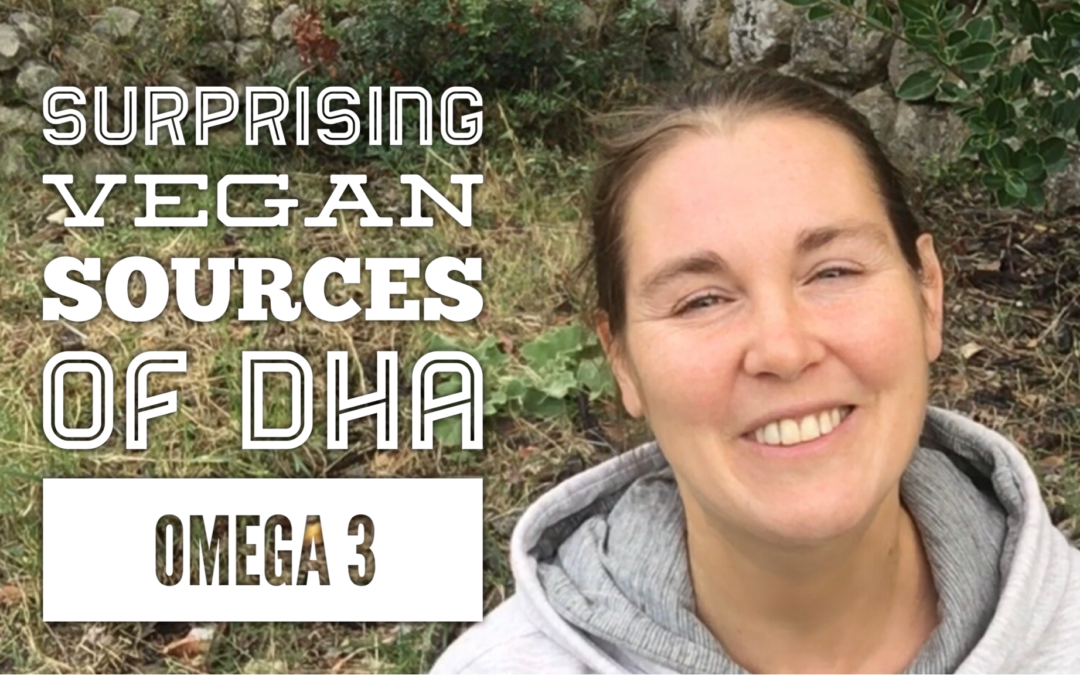Are there vegan sources of DHA that most people are not aware of? It’s a common concern for vegans to get deficient in omega-3, particularly in DHA. And there is a good reason to be concerned because scientists discovered that for most people, the conversion rate of ALA to DHA is quite ineffective. Vegans can get ALA Omega-3 from plant sources. But our body needs to get DHA Omega-3 to function efficiently.
So why would we want to have a specific ratio of omega-3 to omega-6?
Omega-3 fatty acids are more fluid and conduct more electricity than Omega-6. These properties make them very useful for brain activity. Many studies found that people with higher levels of omega-3 have better brain function. And those suffering from brain disorders like Alzheimer’s usually have a noticeable omega-3 deficiency.
The role of DHA Omega-3 fatty acid in our body
Omega-3, particularly DHA, is essential not just for brain function but for all the cells in our body. Each cell membrane in our body is made up of fatty acids. The types of fatty acids that we eat determine the composition of our cell membranes.
DHA gives our cell membranes flexibility and high electrical conductivity. It also allows receptors of our cells to be sensitive to hormones like serotonin and insulin.
Omega-6 and saturated fats are making our cell membranes stronger and more stable. But if we have too many Omega-6 fatty acids and especially saturated fats, our cells become too stiff, and their electrical conductivity will drop. It will also decrease the sensitivity of cell receptors to insulin and serotonin.
And of course, better serotonin sensitivity will increase our happiness. It will decrease the levels of depression, which is such a widespread health challenge these days.
Better insulin sensitivity will help us to transport sugars into our muscle cells and brain cells where they are needed the most. And of course, it will help to decrease the blood sugar issues in people with type two diabetes.
So we can see now how DHA omega-3 is making us smarter, happier, and healthier.
Why most people can’t convert ALA to DHA Omega 3 efficiently?
So why most people have a challenging time converting ALA omega-3 into DHA?
To understand that, let’s take a look at the conversion mechanism of ALA Omega 3 to DHA Omega 3 in our body. We need certain enzymes to convert one omega-3 fatty acid to another. And at the end of this conversion chain, we will get the DHA fatty acid.
And if we take a look at the conversion of omega-6 fatty acids from one form to another, we will see that our body is using the same enzymes for this process.
Most people, including vegans, tend to consume way too much of omega-6 fatty acids. Their body can’t keep up with all this fat and fails to produce enough enzymes to convert all the Omega-6 fats they ate. And as a result, they can’t produce enough enzymes to convert Omega-3 ALA to DHA.
The richest sources of Omega-6 are vegetable oils. And vegan junk food is loaded with vegetable oils. These foods also contain hydrogenated vegetable oils, which are harmful in any quantities. And even if you eat whole food vegan diet, you can get a lot of Omega-6 from sources like most nuts, seeds, and avocados.
Vegan sources of DHA Omega 3
So to get enough DHA on a vegan and raw vegan lifestyle, we need to get enough ALA Omega 3 and not too much Omega 6. This way, our body can easily convert ALA to DHA.
But sadly, most high-fat vegan and raw vegan foods are high in Omega-6. So it’s a good idea to eat relatively low fat overall.
Now, when we hopefully decided to eat less fat overall, we are already to look into the best sources of vegan Omega-3.
And the surprising sources of Omega-3 on a vegan diet are… Drumroll!
Greens, vegetables and even tropical fruit
I’ve put some tropical fruit into Cronometer.com to get about 2000 cal in a day. And it turns out that eating this way would give us 100% of ALA Omega-3 fatty acids according to RDA. Isn’t it fascinating?


And it’s also interesting that we wouldn’t get too many Omega-6 fatty acids from these fruits. We would get even too little of them.
Please be aware that if we eat only fruit, we will not get enough minerals and amino acids. So I would warmly recommend to balance out your beautiful tropical fruit with some dark leafy greens and vegetables.
But what if we take a look at the temperate climate fruit? When I decided to put this type of fruit into Cronometer, it turned out that most of it is quite low in Omega-3 and a little bit higher in Omega-6 than tropical fruit. And their omega 6 to 3 ratio is about 1 to 10, which is not the most optimal.


So what do we do if we eat mostly colder climate fruit? Luckily many greens and vegetables are even higher in Omega-3 than tropical fruit. So by adding green leafy vegetables and some other types of plants, like cauliflower, we can balance out our omega 3 to 6 ratio. But it will only work if we eat relatively low fat.
And what about low fat whole food vegan lifestyle?
But what if we take a look at a low-fat vegan diet? Are there some good sources of vegan DHA in this kind of diet? I’ve put some typical low-fat whole food vegan foods into Cronometer. So now we can see that the omega 6 to 3 ratio is about wanted 1:20.


Luckily it is easy to balance it out with lots of flax seeds, chia seeds, and even better with lots of fresh greens and vegetables and maybe some tropical fruits.
If you wonder how you can add some healthy flax seeds to your diet, check out this delicious raw vegan cracker recipe here.
And if you are passionate about studying raw vegan nutrition on a professional level, I would warmly recommend Dr. Rick and Karin Dina’s course “Mastering Raw Food Nutrition”.
You can find Rick and Karin Dina’s course “Mastering Raw Food Nutrition” here: https://rawfoodeducation.com/?page_id=2721
To get a big discount, mention The Whole Lifestyle.
You can track your Omega 3 and other nutrients in the app I used for this post: https://cronometer.com


Recent Comments